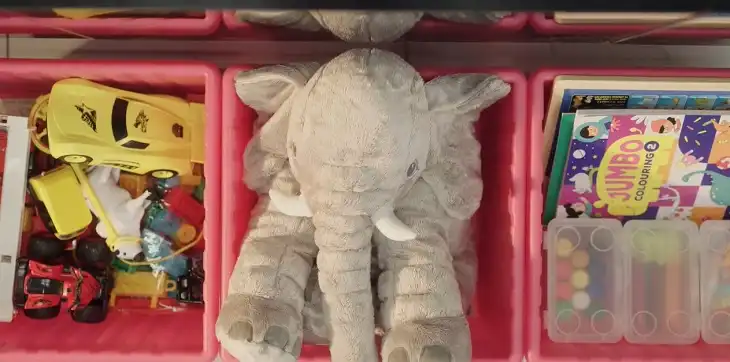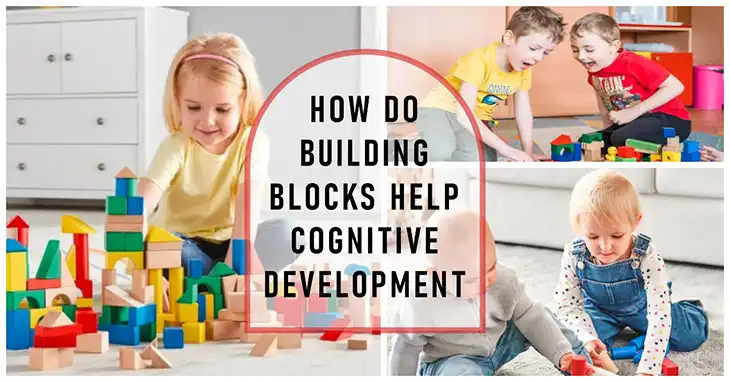Are Mobiles Good for Babies? Benefits & Drawbacks
Baby mobiles have been a nursery staple for generations, but the debate surrounding their benefits and drawbacks continues. These hanging toys, often featuring colorful characters, shapes, or celestial designs, are designed to captivate and entertain little ones. As parents, we want to provide the best for our babies, so it’s natural to wonder if mobiles are truly beneficial or potentially harmful.
The good news is, that baby mobiles are an excellent simulant for your little ones to help them develop their visual skills. However, there may be some potential downsides as well. Below, you’ll find both pros and cons of using baby mobiles so that you can decide for yourself whether you should use them or not. Let’s start.

Benefits of Baby Mobiles
Visual Stimulation
One of the primary advantages of baby mobiles is their ability to stimulate and develop your little one’s visual skills. From birth, babies are naturally drawn to high-contrast colors and patterns, which mobiles often feature. As your baby tracks the moving objects, their focus and eye-tracking abilities are enhanced, laying the foundation for better hand-eye coordination later on.
Moreover, the stimulation provided by mobiles can help strengthen neural pathways in your baby’s developing brain. By exposing them to visually engaging environments, you’re encouraging the formation of new connections and promoting healthy brain growth.
Brain Development
Research has shown a link between visual stimulation and cognitive development in infants. As your baby’s eyes follow the mesmerizing movements of the mobile, their brain is actively processing and making sense of the visual information. This early exposure to patterns, shapes, and colors can contribute to the development of important cognitive skills, such as problem-solving and reasoning.

Motor Skills Development
Mobiles not only stimulate your baby’s visual senses but also encourage physical development. As your little one tracks the moving objects, they strengthen the neck and back muscles essential for sitting upright and maintaining good posture. Additionally, as your baby reaches and tries to grasp the dangling toys, they improve their hand-eye coordination, a crucial skill for future activities like grasping, crawling, and eventually walking.
Soothing and Sleep
While mobiles can be visually stimulating, they can also serve as a calming presence in your baby’s environment. The gentle swaying motion and soothing melodies often associated with mobiles can have a relaxing effect, helping your little one wind down and prepare for sleep. Many parents incorporate mobiles into their baby’s bedtime routine, creating a positive association with restful slumber.
Potential Drawbacks of Mobiles
Overstimulation
While mobiles can provide valuable stimulation, it’s important to consider the potential for overstimulation. Mobiles with bright, flashing lights or loud, jarring sounds may overwhelm your baby’s senses, causing discomfort or disrupting their sleep patterns. Additionally, some babies may be more sensitive to light and sound than others, so it’s essential to observe your little one’s reactions and adjust accordingly.
Creating a Play Association with Crib
One concern often raised about mobiles is the potential for babies to associate their cribs with playtime rather than sleep. If your baby becomes overly engaged with the mobile, they may have difficulty settling down and falling asleep in their crib. To mitigate this, it’s recommended to remove the mobile from the crib before putting your baby down for naps or bedtime, reserving the crib solely for sleep.
Safety Considerations
When using a mobile, safety should be a top priority. Ensure that the mobile is securely attached to the crib or bassinet and cannot fall or come loose, posing a potential hazard to your baby. Additionally, choose mobiles made from safe, non-toxic materials that are free of small, detachable parts that could become choking hazards.
It’s also crucial to follow age guidelines and remove the mobile from your baby’s reach once they start attempting to grab or pull on it, typically around 5 months of age. Keeping mobiles out of reach helps prevent accidents and ensures your baby’s safety.
Alternatives to Mobiles

If you have concerns about using a traditional mobile or prefer alternative options, there are several alternatives to consider:
- High-contrast wall art or mobiles mounted at a safe distance from the crib can provide visual stimulation without the risk of entanglement.
- Calming music or white noise machines can create a soothing environment without the need for dangling toys.
- Engaging with your baby through face-to-face interaction, singing, and reading can provide valuable stimulation and bonding opportunities.
- Other sensory stimulation toys, such as activity mats or play gyms, can offer multi-sensory experiences for your baby’s development.
At What Age It’s Safe to Give Mobiles
When introducing a mobile to your baby, it’s essential to consider their age and developmental stage. Most experts recommend waiting until your baby is around 3 months old before introducing a mobile, as their visual abilities are more developed at this point.
As your baby grows, their interests and attention span may change, so be prepared to adjust the mobile’s position or distance accordingly. Some babies may lose interest in mobiles after a few months, while others may continue to find them captivating for a longer period.
Practical Tips for Using Mobiles
If you decide to incorporate a mobile into your baby’s nursery, here are some practical tips to ensure its safe and effective use:
- Choose a mobile with age-appropriate designs, colors, and features that align with your baby’s developmental stage.
- Position the mobile at the appropriate distance from your baby’s line of sight, typically around 12-16 inches away, and adjust as needed.
- Introduce the mobile gradually, observing your baby’s reactions, and remove it if you notice signs of overstimulation or discomfort.
- Maintain and clean the mobile regularly to ensure it remains safe and hygienic for your little one.
Frequently Asked Questions
At what age should I remove the mobile from my baby’s crib?
Most experts recommend removing mobiles from cribs once your baby starts attempting to grab or pull on them, typically around 5 months of age. This is to prevent potential safety hazards and ensure your baby’s well-being.
Can mobiles help with flat head syndrome (positional plagiocephaly)?
While mobiles can encourage your baby to look from side to side, helping prevent flat spots, they should not be solely relied upon for this purpose. It’s important to follow other recommended practices, such as alternating your baby’s sleep position and providing tummy time.
Are musical mobiles beneficial for babies?
Musical mobiles can be beneficial in providing soothing sounds and promoting relaxation. However, it’s important to ensure the volume is not too loud and that the music is calming, as overly stimulating sounds can be disruptive.
Can mobiles help with the baby’s vision development?
Yes, mobiles can contribute to your baby’s vision development by providing visual stimulation and encouraging eye-tracking and focus. However, they should be used in moderation and not relied upon as the sole source of visual stimulation.
Final Words
The debate surrounding the benefits and drawbacks of baby mobiles is ongoing, but with careful consideration and moderation, they can be a valuable addition to your baby’s nursery. By providing visual stimulation, promoting brain and motor skill development, and offering a calming presence, mobiles can positively contribute to your little one’s growth and development.
However, it’s crucial to prioritize safety, monitor for signs of overstimulation, and avoid creating associations between the crib and playtime. Additionally, mobiles should be used in conjunction with other forms of engagement, such as interactive play, reading, and bonding experiences.
Happy parenting!






